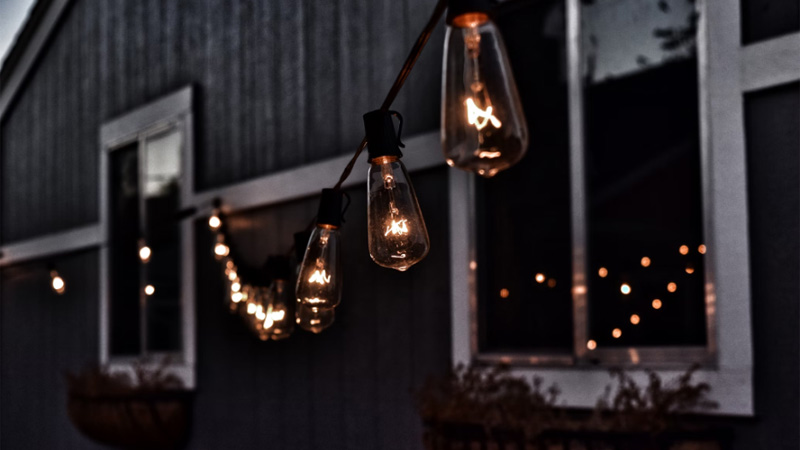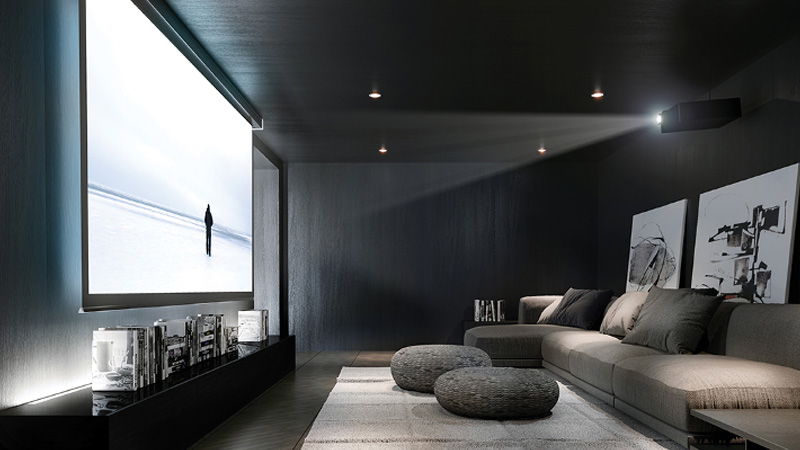
LED Lumens to Watt:
How Many Lumens Your Display Need?
How many times have you watched your favorite movie with friends, where everyone is at the edge of their seats anticipating the ending, only to realize halfway through that the dim lighting of your screen makes the dramatic climax look more like a shadow puppet show?
Optimal viewing is critical to a great movie experience. Therefore, understanding the balance between brightness and energy consumption is crucial.
The transition from traditional lighting to LED technology has changed how we measure brightness. We no longer consider watts; lumens have become the key metric. But how do you determine the correct number of lumens for your display?
Whether setting up a home theater, designing a dynamic digital billboard, or upgrading your computer monitor, knowing the lumens-to-watt ratio is essential. This guide will illuminate how many lumens your display needs to achieve the perfect balance of clarity and efficiency.
Discover the science behind LED brightness, tips for selecting the correct display, and how to ensure your visual setup is brilliant and energy conscious.
1. Lumens: Let's Shed a Light On It
Lumens are a unit of measurement that quantifies the total amount of visible light emitted by a source. Unlike watts, which measure energy consumption, lumens directly indicate the brightness of a light.
This metric is crucial for assessing and comparing the luminosity of different lighting options, especially in the era of energy-efficient LED technology.
You can’t directly compare watts and lumens. Watts measure how much energy a bulb uses, while lumens measure how bright it is. So, a 60-watt bulb is only sometimes brighter than a 100-watt bulb. Newer bulbs like LEDs and CFLs are much more energy-efficient, producing the same amount of light (lumens) while using less energy (watts).
The good news? Focusing on lumens makes it easier to find the correct bulb. If your old 60-watt bulb gave off around 700-800 lumens, look for a replacement with similar lumens but lower wattage. For instance, a 10-watt LED or a 12-watt CFL might do the trick.
Use the lumen number as your guide to finding the perfect bulb for your space.

2. Watts vs. Lumens: What's the Difference?
We’ve all been there – staring at a bulb package, puzzled by the numbers. Watts, we know. That’s power, right? But lumens? It’s a different story.
While watts tell us how much energy a bulb consumes, lumens reveal its true character: brightness.
Think of it this way: Watts is a bulb’s appetite, while lumens are its glow. So, next time you’re shopping for lights, don’t just look at the wattage; let lumens be your guide to a brighter, more energy-efficient world.
Let’s look at these key differences:
● Lumens measure brightness, while watts measure energy consumption.
Lumens quantify the amount of visible light emitted by a bulb, determining how bright it appears. On the other hand, Watts indicates the electrical power the bulb uses to operate.
● Lumens are consistent across bulb types, while watts are not.
A 60-watt incandescent bulb produces a different amount of light than a 60-watt LED bulb. Lumens provide a more accurate comparison of brightness between different bulb technologies.
● Lumens are essential for selecting the correct bulb, while watts are less critical.
When choosing a bulb, focusing on lumens ensures you get the desired brightness. Watts were primarily used for comparison in older incandescent bulbs but are less relevant with energy-efficient options.
● Higher lumens mean a brighter bulb, while higher watts generally mean higher energy consumption.
A bulb with more lumens will produce more light, regardless of its wattage. Conversely, a bulb with higher wattage typically consumes more electricity, but this doesn’t necessarily mean it’s brighter.
● Lumens are a direct measure of light output, while watts are an indirect measure.
Lumens provide a precise measurement of a bulb’s brightness, while watts only indicate the bulb’s energy usage. Newer, more efficient bulbs can produce the same amount of light (lumens) while using less energy (watts).

3. Lumens to Watts Conversion: A Guide
Before diving in, it’s crucial to clarify a common misunderstanding: you cannot directly convert lumens to watts. These two units measure different aspects of a light bulb:
● Lumens quantify the amount of visible light emitted by a bulb. It’s a measure of brightness.
● Watts measure the electrical power a bulb consumes. It’s a measure of energy usage.
While both relate to a light bulb’s performance, they are not interchangeable.
The Role of Efficiency
The efficiency of a light bulb bridges the gap between lumens and watts. Efficiency is measured in lumens per watt (lm/W). A higher lm/W value indicates that a bulb produces more light for the same amount of energy, making it more efficient.
For example, an LED bulb with 100 lumens and a power consumption of 10 watts has an efficiency of 10 lm/W. An incandescent bulb with the same 100 lumens might consume 60 watts, resulting in a lower efficiency of about 1.67 lm/W.
Indirect Conversion
While you can’t directly convert lumens to watts, you can use efficiency to estimate wattage based on desired lumens. However, this is just an approximation, as efficiency varies among different bulb types and models.
Here’s a simplified approach:
● Determine the desired lumens: Decide how bright you want the light to be.
● Estimate efficiency:
Choose a typical efficiency value for your preferred bulb type (e.g., LED, CFL, incandescent).
● Calculate approximate wattage:
Divide the desired lumens by the estimated efficiency.
For instance, if you want an 800-lumen bulb and choose an LED bulb with an estimated efficiency of 100 lm/W, the approximate wattage would be 800 lumens / 100 lm/W = 8 watts.
Important Considerations
Remember that this is a rough estimate. Actual wattage might vary depending on the specific bulb model. Additionally, factors like bulb temperature and lifespan can influence efficiency.
Always refer to the bulb’s packaging or specifications to get the most accurate wattage. When selecting a light bulb, consider other factors beyond wattage and lumens, such as color temperature (measured in Kelvin) and color rendering index (CRI).
While lumens and watts are related, they are not directly convertible. Understanding the concept of efficiency helps in making informed decisions about lighting choices.

4. Unraveling the Lumen: How LEDs Light Up Your World
LED lights are measured in lumens because lumens quantify the amount of visible light emitted by a source. Unlike watts, which measure energy consumption, lumens directly measure brightness.
Lumen brightness is important for consumers to understand. They must know how much light they can expect from an LED light bulb.
Here are a few reasons why lumens are used for measuring LED lights:
● Brightness Measurement:
Lumens measure the total quantity of visible light emitted by a source, clearly indicating the light’s brightness. This situation helps consumers choose the appropriate lighting for their needs.
● Energy Efficiency:
LED lights are known for their energy efficiency. Measuring in lumens allows for easy brightness comparison across different types of bulbs, regardless of their power consumption in watts. This efficiency highlights the efficiency of LEDs, which produce more lumens per watt than traditional incandescent bulbs.
● Consistency:
Using lumens as a standard measure ensures consistency across lighting technologies, such as incandescent, fluorescent, and LED. This consistency makes it easier for consumers to compare products and make informed decisions.
● Regulations and Standards:
Many countries have regulations and standards that require lighting products to be labeled with their lumen output. These regulations help ensure that consumers have access to accurate information about the brightness of the lights they are purchasing.

5. Lumens: Finding the Perfect Light for Every Space
Here is a standardized LED lumens chart to help you determine the number of lumens required per square foot for various rooms in your home:
● Kitchen: 60-80 lumens
● Dining Room: 30-40 lumens
● Living Room: 40-50 lumens
● Bedroom: 30-40 lumens
● Study Room/Office: 60-80 lumens
● Bathroom: 50-80 lumens (depending on preference)
● Garage: 60-80 lumens
Please note that while this chart provides a standard guideline, the number of lumens you need can vary based on personal preference. For example, some people prefer their bedrooms to be dim and cozy, while others want them bright and well-lit. Similarly, bathroom lighting needs can vary greatly depending on whether you prefer a softer ambiance or require high visibility.
Of course, such lighting can be found outdoors.
Outdoor displays are durable, weather-resistant screens used for advertising, information dissemination, and entertainment in public spaces, offering high visibility and engagement day and night.
6. Final Thoughts
Lumens are the key to unlocking the perfect brightness for your display. Why focus on lumens rather than watts? Doing this can accurately determine the light output needed for any space. Consider factors like room size, intended use, and personal comfort when selecting the ideal lumen level for your lighting needs.
Remember, more lumens equal brighter light, so choose wisely based on your specific needs and preferences.